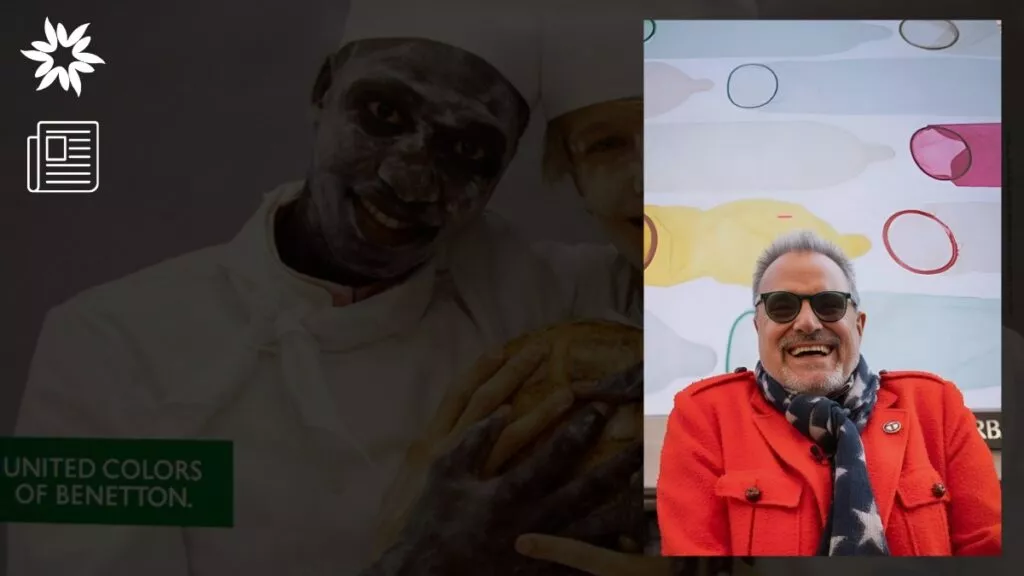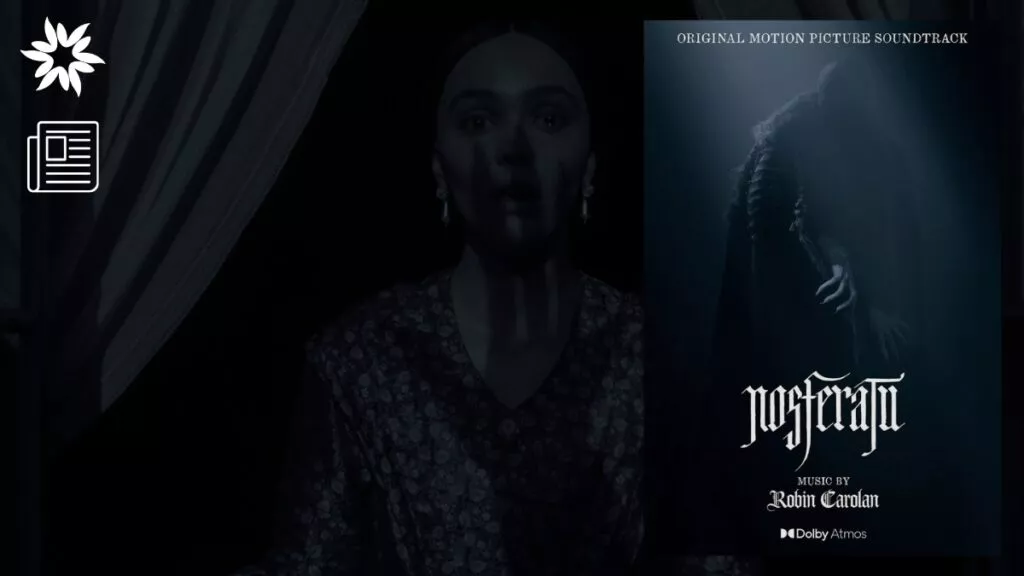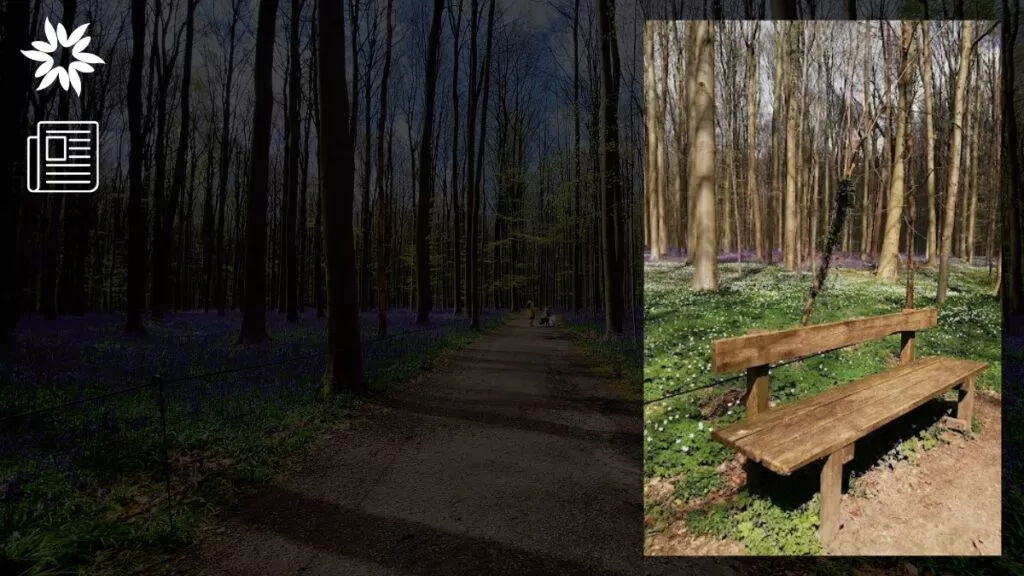Acrylic painting is an awesome way to get into art, whether you’re just starting out or looking to level up your skills.
It’s versatile, dries fast, and works on almost anything, like canvas, paper, wood, or glass.
With the right techniques, you can create anything from bold, textured pieces to soft, blended artwork.
This list of 50 acrylic painting techniques is perfect for beginners who want to learn the basics and improve.
With some practice and experimenting, these tips will help you improve your acrylic painting skills!
Key Takeaways
- Many techniques, like dry brushing, stippling, and palette knife application, focus on adding texture to your paintings.
- Techniques like washing, glazing, and wet-on-wet blending allow smooth transitions between colors and rich, layered effects.
- Using materials like sand, alcohol, or silicone oil adds unexpected textures and patterns, such as crackle effects, acrylic pour cells, or salt textures.
1. Dry Brush Technique
The dry brush technique is a fantastic place to start when it comes to acrylic painting for beginners.
With this technique, you use a mostly dry brush with just a bit of paint on it.
When you drag the brush across the canvas, it leaves a scratchy, textured effect.
In particular, this works great for adding rough details like wood grain or the bark of a tree.
In fact, it’s a super simple way to make your painting look more textured without too much effort.
2. Washing
In a wash, you thin out your acrylic paint by mixing it with water until it’s pretty runny.
When you paint with this mixture, it gives you a soft, translucent effect, almost like watercolors.
This is perfect for painting backgrounds, soft skies, or light, misty scenes where you don’t want heavy, opaque colors.
3. Dabbing
Dabbing is a fun technique that does the job efficiently when looking to add texture fast.
Grab a sponge, paper towel, or brush, and lightly dab paint onto the canvas.
The dabbing motion leaves little spots of color, and you can layer these for interesting effects.
In many ways, it’s great for painting things like leaves, bushes, or even abstract designs.
4. Stippling
Stippling involves painting the canvas with a brush, toothbrush, or even your fingers.
You can create shading or texture by grouping the dots closer or spreading them out.
It’s perhaps the best way to add texture to landscapes, or even portraits, without blending or mixing many colors.
5. Splattering
You dip your brush in the paint for splattering, then flick it onto the canvas for random, messy specks.
This fun technique works well for stars in a night sky or abstract art. So, if abstract art is your thing, you’ll want to experiment with splattering as much as possible.
You can control the size of the splatters by adjusting how much paint is on your brush or how hard you flick it.
6. Layering
Layering is about building up your painting bit by bit.
You start with a primary color or shape, let it dry, then add more paint on top.
It’s like building a painting one layer at a time, giving you more control over the depth and detail.
Thus, it’s perfect for creating complex, rich paintings with a lot of color variation.
7. Glazing
Glazing is when you apply a thin, transparent layer of paint over a dried layer of paint.
In a sense, it’s like putting a colored filter over your painting.
When done right, this technique adds depth, creates subtle color shifts, or gives your work a glowing effect.
It’s one of the best ways to soften bright colors or adjust shadows.
8. Dry-On-Wet
In this technique, you apply dry or thick paint on a wet layer.
The dry paint won’t mix much with the wet paint underneath, but it gives you some interesting, partially blended effects.
This creates texture while keeping a little softness in the background, like for stormy skies or rough landscapes.
9. Wet-On-Wet
Wet-on-wet is when you paint one layer while the previous layer is still wet.
The colors blend easily together, which can make transitions smooth and soft.
This technique is perfect for soft transitions, especially in skies, clouds, or water, where you want colors to fade into each other gently without harsh lines or edges.
10. Palette Knife
Using a palette knife lets you apply thick, bold layers of paint.
Instead of using a brush, you smear the paint on the canvas with the knife, which creates textured, 3D strokes.
It’s perfect for bold, rough textures like mountains, waves, or abstract works.
With this technique, you can feel the texture of the paint, making your painting pop off the canvas.
11. Sgraffito
Sgraffito is when you scratch into wet paint to reveal the layer underneath.
You can use anything with a sharp edge, such as the back of your brush, a toothpick, or even a palette knife.
Going with this technique gives you cool lines and textures, especially when working with thicker paint.
So, it’s perfect for details like fur, grass, or even those intricate patterns you want to bring to life.
12. Impasto
Impasto involves applying super thick paint to the canvas, so thick that you can see the brushstrokes or palette knife marks sticking out from the surface.
It’s incredible that the result is very textured, almost 3D.
For adding energy and drama to your artwork, especially in landscapes or abstract pieces, this approach brings your painting to life.
13. Scumbling
Scumbling is when you drag a dry brush with a small amount of paint over your canvas, leaving broken, uneven patches of color.
With this technique, your painting gets a soft, textured look that creates a sense of distance, perfect for clouds or misty backgrounds.
The focus here is on being light-handed and not pressing too hard.
14. Gradients (Blending)
Creating gradients, or blending, is when you mix two or more colors smoothly where they meet, creating a soft transition.
Thus, it’s super useful for painting things like sunsets, skies, or smooth shadows.
But make sure to work quickly before the paint dries, blending the colors together with soft brushstrokes.
15. Underpainting
Underpainting is when you start your painting with a simple, usually monochrome, base layer.
It helps you block out the basic shapes and values before adding more color and detail.
You can think of it like sketching with paint.
As a helpful approach, underpainting is a great way to get your composition right and make sure the values (lights and darks) are strong.
16. Chiaroscuro
Chiaroscuro is a technique that focuses on strong contrasts between light and dark areas in your painting.
In essence, it’s about making your subject pop by using shadows and highlights to create depth.
This technique is often used in dramatic portraits or scenes with intense lighting where you want a 3D effect.
17. Sponging
Sponging is super easy and creates awesome textures fast.
You only need to dip a sponge in paint and dab it onto the canvas.
This method is particularly useful for natural textures. It works well for painting leaves, clouds, or even water because the sponge’s uneven surface creates random, organic patterns.
As a bonus, it’s a fun and quick way to add texture without too much effort.
18. Feathering
Feathering involves using a light, almost barely-there touch with your brush to create soft, fuzzy edges.
This technique is perfect for clouds, waves, or anything that needs a soft, airy look.
Just lightly brush the paint with gentle strokes to blend the edges, creating smooth transitions between colors.
19. Pointillism
Pointillism is a unique technique that focuses on painting with tiny dots of color to create an image.
Instead of mixing your colors on the palette, you put them on the canvas as dots and let the viewer’s eyes mix them from a distance.
Sure, it’s time-consuming, but the result can be vibrant and captivating.
It’s especially great for landscapes where you want different colors to merge softly.
20. Hatching
Hatching is when you use small, straight lines to build up areas of shading or texture.
Basically, the closer the lines, the darker that area will look.
It’s a handy technique for adding shadows or texture without needing to blend your paint.
21. Cross-Hatching
Cross-hatching is an extension of hatching where you crisscross the lines to make the shading even darker and more textured.
When you’re aiming for depth or shadow, this method is perfect without needing to blend colors.
As you add more lines, the effect becomes darker and richer.
Ideal for creating texture, it works incredibly well for things like stone or fabric.
22. Masking
Masking is a handy technique if you need sharp, clean edges in your painting.
You can use painter’s tape or masking fluid to block off areas where you don’t want any paint.
Once your paint is dry, you can peel off the tape or fluid to reveal crisp lines.
When it comes to creating sharp details, this method is excellent for forming geometric shapes or preserving bright highlights in your artwork.
23. Dragging
Dragging involves pulling a wide, flat brush with paint across the canvas to create streaky effects.
The goal is to leave visible brush marks, which gives your painting a loose, flowing feel.
So, as you can imagine, this technique is perfect for painting things like skies, water, or long textures because it creates a sense of motion and softness without too much blending.
24. Pouring
Pouring is when you mix your acrylic paint with a pouring medium to thin it out, then pour it directly onto the canvas.
This creates abstract, fluid designs as the paint flows and spreads.
You can tilt the canvas to control the movement of the paint or let it spread naturally.
For those who enjoy a bit of spontaneity, this technique is fun and unpredictable, making it perfect for abstract art lovers.
25. Stencil Art
Stencils are great if you want precise shapes or patterns in your painting.
You place the stencil on your canvas, paint over it, and then carefully lift it off to reveal the design underneath.
This method gives you crisp, clean edges without the need for perfect freehand painting.
It’s amazing how you can create repeating patterns or detailed designs effortlessly.
P.S. If you’re also new to drawing, check out our step-by-step guide on how to draw! Perfect for beginners!
26. Decoupage
Decoupage involves gluing paper, fabric, or other materials onto your canvas and then painting over or around them.
It adds texture and dimension to your painting in a creative way.
To enhance the effect, you can blend the glued materials into your composition with paint or leave them as a standout feature.
When you’re looking to experiment, this approach is perfect for mixed media projects and adds a unique twist to your work.
27. Texturing with Sand
For extra texture, you can mix sand (or another gritty material) directly into your acrylic paint.
This gives your painting a rough, tactile surface, making it feel more 3D.
You can use it for anything that needs a gritty look, like beaches, stone, or rough landscapes.
This technique is an excellent way to experiment with textures and make your artwork more interactive.
28. Smudging
Smudging is super simple and can give your painting a soft, blurred look.
You can blend or blur the paint while it’s still wet using your finger, a cloth, or even a sponge.
So, this technique is ideal for creating smooth transitions between colors or softening harsh edges.
It’s often used for blending shadows, clouds, or skin tones.
29. Blocking In
Blocking in is one of the first steps in a painting. In this step, you lay down large, simple shapes to map out your composition.
At the start, this technique helps you get the basic proportions and colors right before diving into the details.
There’s no need to focus on perfection here, as you’re just laying down the general structure of your painting.
By doing this, the process becomes much easier when you move on to adding finer details.
30. Rubbing Alcohol Effects
This technique creates cool, unexpected textures by dropping rubbing alcohol onto wet acrylic paint.
As the alcohol reacts with the paint, it pushes it away, leaving organic, bubbly shapes behind.
For those looking to add more texture and interest, it’s perfect, especially in abstract pieces or backgrounds.
Depending on how wet the paint is and the amount of alcohol you use, the effect can vary greatly.
31. Salt Texture
Salt texture is a fun and easy way to add unique patterns to your painting.
While your paint is still wet, sprinkle a bit of salt on top.
As the paint dries, the salt absorbs moisture and creates interesting, almost crystal-like textures.
Once it’s dry, you can brush off the salt, and you’ll be left with cool, organic patterns that are perfect for backgrounds or abstract pieces.
32. Acrylic Pour Cells
To create cells in acrylic pouring, mix your acrylic paint with a pouring medium and a few drops of silicone oil.
When you pour it onto the canvas and move the paint around, the silicone separates it, creating bubble-like patterns called cells.
These cells add a dynamic, almost cosmic look to your artwork, making every pour unique.
33. Scraping
Scraping is when you drag the edge of a palette knife, old credit card, or any flat tool across the canvas.
It’s great for adding rough, bold textures or even removing paint to reveal layers underneath.
You can use this technique to add quick details, like streaks in a landscape, or just create a fun, abstract effect that adds texture to your painting.
34. Reverse Stencil
In reverse stenciling, you paint over an area first, then place a stencil on top and remove the paint inside the stencil shape.
With this method, you get a design with negative space, where the original paint shows through.
In addition, it’s a creative way to make unique shapes or patterns, and it works especially well for creating repeating designs or bold contrasts.
35. Veining
The veining technique uses a fine brush to add thin, delicate lines, often to mimic the veins of leaves or the intricate lines in marble.
You can create a realistic, detailed effect by layering these fine lines over a base color.
It’s perfect for giving your painting a more natural or polished look, especially in detailed scenes like botanical art.
36. Monochrome Painting
Monochrome painting is when you stick to just one color and use different shades or tones of that color to create the whole piece.
This helps you focus on shading, value, and contrast without worrying about mixing lots of different colors.
Plus, it’s an excellent way to practice using light and dark to build depth, resulting in striking, minimalist artwork.
37. Taping for Clean Lines
Painter’s tape is your best friend if you want sharp, clean edges or geometric designs in your painting.
Simply place the tape where you don’t want paint, then paint over or around it.
Once you’re done and the paint is dry, peel off the tape to reveal crisp, sharp lines.
Thus, this technique works wonders for creating bold patterns or separating different sections of color.
38. Floating Color
Floating color is when you apply water or a diluted paint mixture around the area you want to color, then drop in more concentrated paint.
As the paint spreads out gently into the wet area, it creates soft, flowing edges and a natural blend.
You’ll find it useful for achieving dreamy, misty effects or soft backgrounds, like landscapes or skies.
39. Using Gel Medium
When you mix gel medium with acrylic paint, it thickens the paint and gives it a glossy, textured finish.
Moreover, gel medium can extend the drying time of your paint, giving you more time to work on blending.
For artists looking to add texture and depth to their painting, it makes certain areas stand out with a shiny, dimensional effect.
40. Crackle Effect
The crackle effect is created using a crackle medium, which you apply over a layer of paint.
When you paint another layer on top, the crackle medium causes it to dry with cracks, revealing the color underneath.
This gives your painting an aged, vintage look, which adds character to your artwork, especially in rustic or distressed designs.
41. Acrylic Ink Drips
Acrylic ink drips provide a cool way to add an abstract or flowing feel to your painting.
You can control the drips by carefully tilting the canvas or letting them flow randomly for a more chaotic effect.
Because the ink is thinner than regular acrylic paint, it moves easily.
Artists often find this technique helpful in adding dynamic lines or layers, especially in abstract or expressive works.
42. Bubble Wrap Texturing
For a fun and unique texture, you can use bubble wrap.
Simply press a piece of bubble wrap onto wet paint, then lift it off to leave behind a dotted pattern.
This method creates an interesting, random texture resembling pebbles, bubbles, or abstract designs.
With minimal effort, you can easily add some playful texture to your painting.
43. Gesso Priming
Gesso is like a primer for your canvas that helps the paint stick better and gives you a smoother surface to work on.
Applying gesso before you start painting makes the canvas less absorbent, which allows your colors to pop more and makes blending easier.
It’s an important first step if you want to get the best results from your acrylics, especially on rough or textured surfaces.
44. Detailing with Fine Brushes
Fine brushes are perfect for adding those tiny, intricate details that bring your painting to life.
Whether you’re painting tiny highlights in a portrait or creating delicate textures like hair or grass, these brushes give you precise control.
Using fine brushes requires a little patience, but they’re great for making your work look detailed and polished.
45. Using a Fan Brush
A fan brush is awesome for creating natural textures.
The bristles are spread out like a fan, so it’s perfect for painting things like grass, fur, or trees with a few light strokes.
It gives your painting a soft, textured look with minimal effort, and you can use it to build layers of texture in your landscapes or animal paintings.
46. Marbling
Marbling involves lightly mixing two or more colors on the canvas or palette to create unique designs that form swirling patterns.
As you don’t blend them fully, the colors remain distinct while flowing into each other in interesting ways.
Artists love using this approach to add a dreamy, flowing effect to their paintings, making them perfect for backgrounds or abstract designs.
47. Pouring Swipe Technique
In the swipe technique, after pouring your paint onto the canvas, you gently drag a tool (like a palette knife or a piece of plastic) across the surface.
As you do this, the colors blend and reveal hidden layers or patterns underneath.
This approach allows for soft transitions or cells in acrylic pouring, giving the piece a smooth, flowing look.
48. Grid Method
The grid method is a simple way to get the proportions of your subject just right.
By drawing a grid over your reference image and then replicating the same grid on your canvas, you can break down the image into smaller, more manageable sections.
This makes it easier to scale up and get everything in the right place. And many find it to be a valuable tool for beginners or for painting detailed portraits.
49. Negative Space Painting
Negative space painting is when you focus on the empty spaces around your subject rather than the subject itself.
By painting the areas around your main object, you create the object’s shape without actually painting it.
Using this technique allows you to simplify complex scenes and add a bold, graphic style to your artwork.
50. Practice with Simple Shapes
When you’re just starting, practicing with simple shapes like circles, squares, and triangles can really help you improve your control and color mixing.
These basic shapes are easy to focus on, so you can get the hang of brushstrokes, blending, and shading.
And once you’re comfortable with simple shapes, it becomes much easier to move on to more complex designs and subjects.
Put These Techniques into Practice!
Grab your acrylics, pick a technique, and start experimenting today!
Don’t be afraid to make mistakes—each is a chance to learn something new.
The more you practice, the more confident you’ll become, and before long, you’ll see your progress turning into pro-level artwork.
So, get creative, explore different methods, and watch your style develop!








